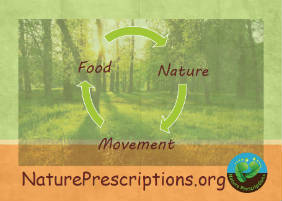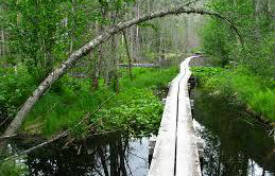As cities are built, permeable natural surfaces like grass and forests, are replaced with impermeable surfaces such as buildings and roads. In nature, a large majority of rainwater is absorbed into the soil and will eventually be used by plants, or filter down to groundwater. In a city, water has less places to go, and a lot of it will run off into storm drains that were put in place to keep water from building up on the roads.
 Unfortunately, these drains empty untreated water directly into lakes, rivers, and streams. Anything that is on city surfaces or dumped into the storm drain will get flushed into the drains and pollute our waterways. This can include things like trash, car oil, and animal waste. Some things you can do to reduce this type of pollution is to never litter, pick up after your animals, keep your car maintained, and never put anything down the storm drains.
Unfortunately, these drains empty untreated water directly into lakes, rivers, and streams. Anything that is on city surfaces or dumped into the storm drain will get flushed into the drains and pollute our waterways. This can include things like trash, car oil, and animal waste. Some things you can do to reduce this type of pollution is to never litter, pick up after your animals, keep your car maintained, and never put anything down the storm drains.
Retention basins are man-made ponds that are partially filled with water. Storm drains will empty quickly into the retention basin, and then the water will flow slowly through smaller drains out to the stream until the water is back to the original level. These basins slow down the flow of storm water runoff so that streams do not get overloaded and flooded. Because  these basins remain partially filled with water, it allows sediments brought to the basin to settle to the bottom, thus decreasing the amount of sediment heading to the stream. This is a desired effect because too much sediment in the water can harm aquatic life. A detention basin, on the other hand, is similar except that it is empty except for when water is fed into it during a rain event.
these basins remain partially filled with water, it allows sediments brought to the basin to settle to the bottom, thus decreasing the amount of sediment heading to the stream. This is a desired effect because too much sediment in the water can harm aquatic life. A detention basin, on the other hand, is similar except that it is empty except for when water is fed into it during a rain event.
Additional methods to combat runoff include porous pavement, green roofs, and rain gardens. These methods reduce runoff directly at the source and help keep pollutants out of our water.

 Click picture above to download your own Nature Prescription
Click picture above to download your own Nature Prescription






